how the 2011 web based app Picsart is connected to 2020s mainstream pop music
graphic design is my passion
Lana Del Rey has never been able to escape the Picsart allegations, especially with her last single drop, “Henry, Come On,” which quite literally features a digital scrolling bar from a screenshot. Nobody was a hater on it because it’s just so unfiltered and relatable.
But the torch of these allegations has been passed to Addison Rae, who just released her debut album in the summer of 2025. Former TikTok “it girl,” she’s spent the past year associating herself with artists on the fringes of mainstream like Arca and Charli XCX. We left Brat Summer, where a simple Arial font and a bold green ruled the world. And Addison’s Y2K digital aesthetic for her album rollout seems to be derivative of this rejection of high fidelity pop star expectations. So yes, the album art does give Picsart with the filter and the typography. Fans called out SO FAST that she took notes from Lana.
She could have gone traditional with a sleek photoshoot and a super curated brand, but instead, she taps into something that’s all over the place visually and a tiny embarrassing, but it still is calculated and pointed. And it has hit.
In 2025, not trying that hard is more powerful than executing a 360, high budget brand refresh. Looking like you made something on your phone at 1AM isn’t lame, it’s proof that you’re relatable and not trying to perform for the mass consumption gaze, even if you are.
Picsart is an interesting app in a world of high quality content creation capabilities at the tips of our fingers on every phone.
To think of how we got here, discussing the camp aspect of 2025 album covers, it’s really the culmination of a decade (or more) of democratized internet content, creation tools and shareability.
If you don’t know about Picsart, it’s a free mobile and web editor for photos. It’s like if the Instagram filter “Mayfair” was an app. It launched in 2011, before Canva and before the term “content creator” became a job title. The output is insane with its sparkly, stickerfied, text driven compositions and elements. Think fan art and lofi. No Photoshop skills needed. No DSLR photos either. Just bad font choices, butterfly graphics and an idea from a daydream.
 Tiktok failed to load.
Tiktok failed to load.Enable 3rd party cookies or use another browser
It was the go to web based app for Tumblr edits, DeviantArt collages and early stan accounts which is an internet art form free of the burden of judgment. These are made to express feelings about subject matter, not to be perfected pieces of art.
 Tiktok failed to load.
Tiktok failed to load.Enable 3rd party cookies or use another browser
Until recently, good editing was expensive and elite, even though 14 years ago, Picsart was one of the first tools to make creativity accessible. It was looked at as “less than” because top caliber editing had always been exclusive, especially before DIY content became normalized in branded spaces. That shift didn’t really begin until after 2020, when the pandemic, TikTok and the rise of scrappy aesthetics started to legitimize bedroom production and self made design across the internet.
Commercial aesthetics were still defined by polish, and there was a clear gap between what alternative approaches looked like in zines and physical art versus how it was starting to take shape in capitalist intended digital content. Time and or money equaled art. Using an app with premade elements you could drag and arrange felt juvenile compared to building something from scratch with blood, sweat and tears.
Fast forward a decade, now everyone can shoot in 4K on their phone. You can Facetune anything out, use AI to retake a photo if your eyes were closed and edit an entire movie on CapCut, all before a situationship replies to your text.
Post 2020, our eyes have been trained to expect polished content everywhere, even from your local car dealer! So when you look at Picsart in that context, it hits diff. It’s not just low effort. It’s its own visual genre.
There’s a difference between today’s UGC that’s shot on phones, but still running through incredible tech and the glitchy edits Picsart is known for. UGC still feels modern, even if casual. Picsart feels like it never left 2013. It’s static. It’s sparkly. It’s glittery and janky on purpose. Even now with AI tools offered, the core vibe hasn’t changed and that’s the charm! (PLEASE NEVER CHANGE!)
What I love in 2025 is that Picsart knows exactly what it is. Its social strategy doesn’t try to overcompensate or pretend it’s something it’s not. It doesn’t try to prove that it’s grown up or serious now. It’s in on the joke, but it also respects and never isolates the people who use it earnestly.
They celebrate every piece of discourse about the brand. The ironic ones. The sincere ones. The fandom. The edits with too much type that can’t be read. That’s because Picsart really rides both worlds of earnest and camp. The below shows a UGC moment where a user shows how to emulate an Ariana Grande fan edit style, right under, is the reactive piece of content Picsart made from this social listening, honoring the fandom. It’s earnest in that people use it to make real edits, real tributes, real art and expressions of self.
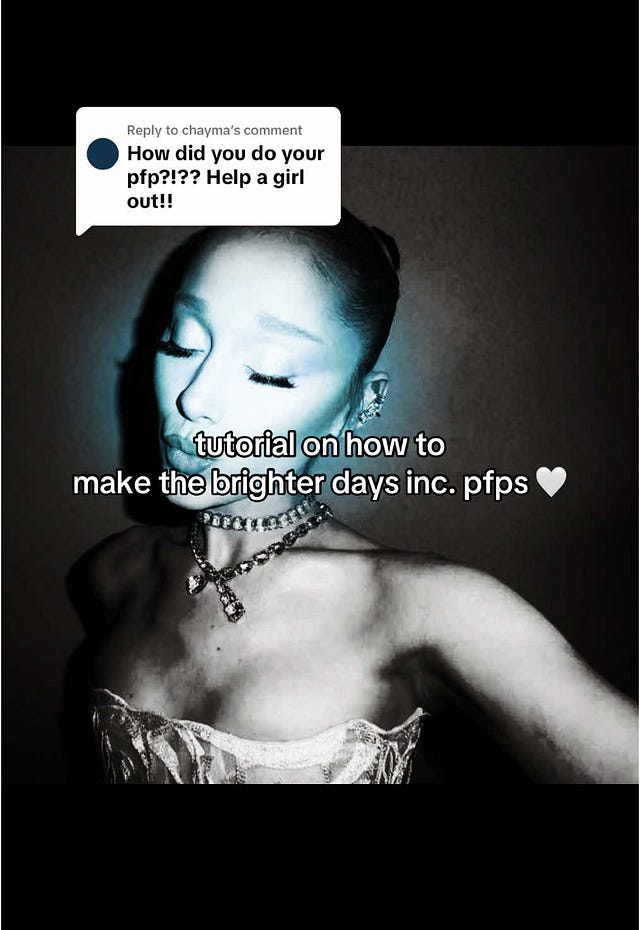
 Tiktok failed to load.
Tiktok failed to load.Enable 3rd party cookies or use another browser
It’s camp in that people also use it to make memes or time travel back to an internet age that’s long gone, or one they weren’t even there for. 8 bit bling. Wolves. Corny typography. Ten filters at once. And the app doesn’t make you pick a side.
It feels like the only place that still honors what early internet culture stood for. It’s so self aware and it knows nothing matters anymore.
Note: this was not an ad for Picsart, or Addison Rae, or Lana Del Rey. <3



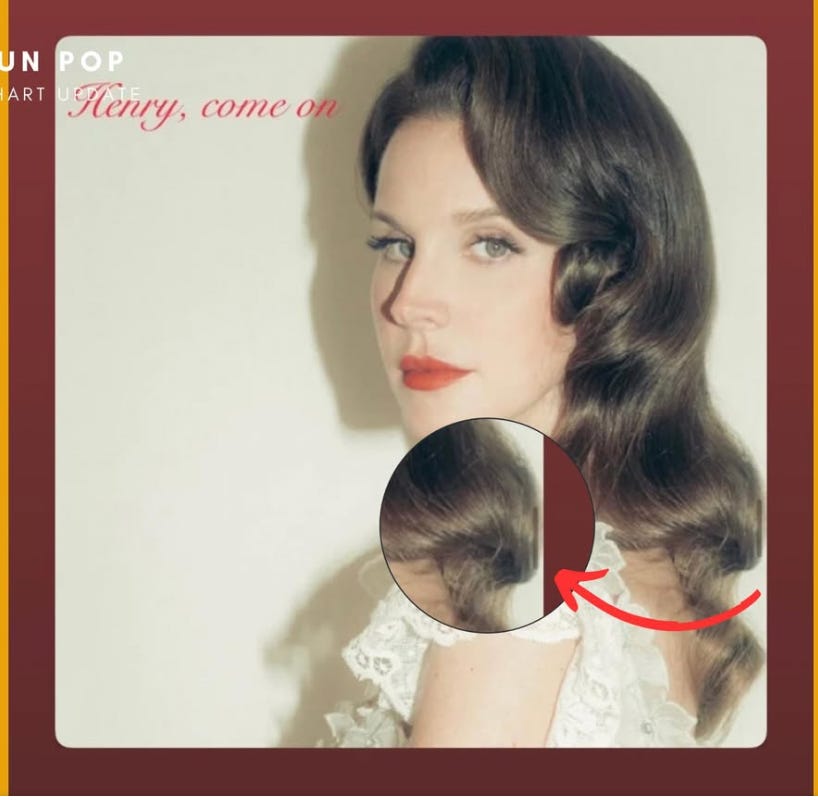
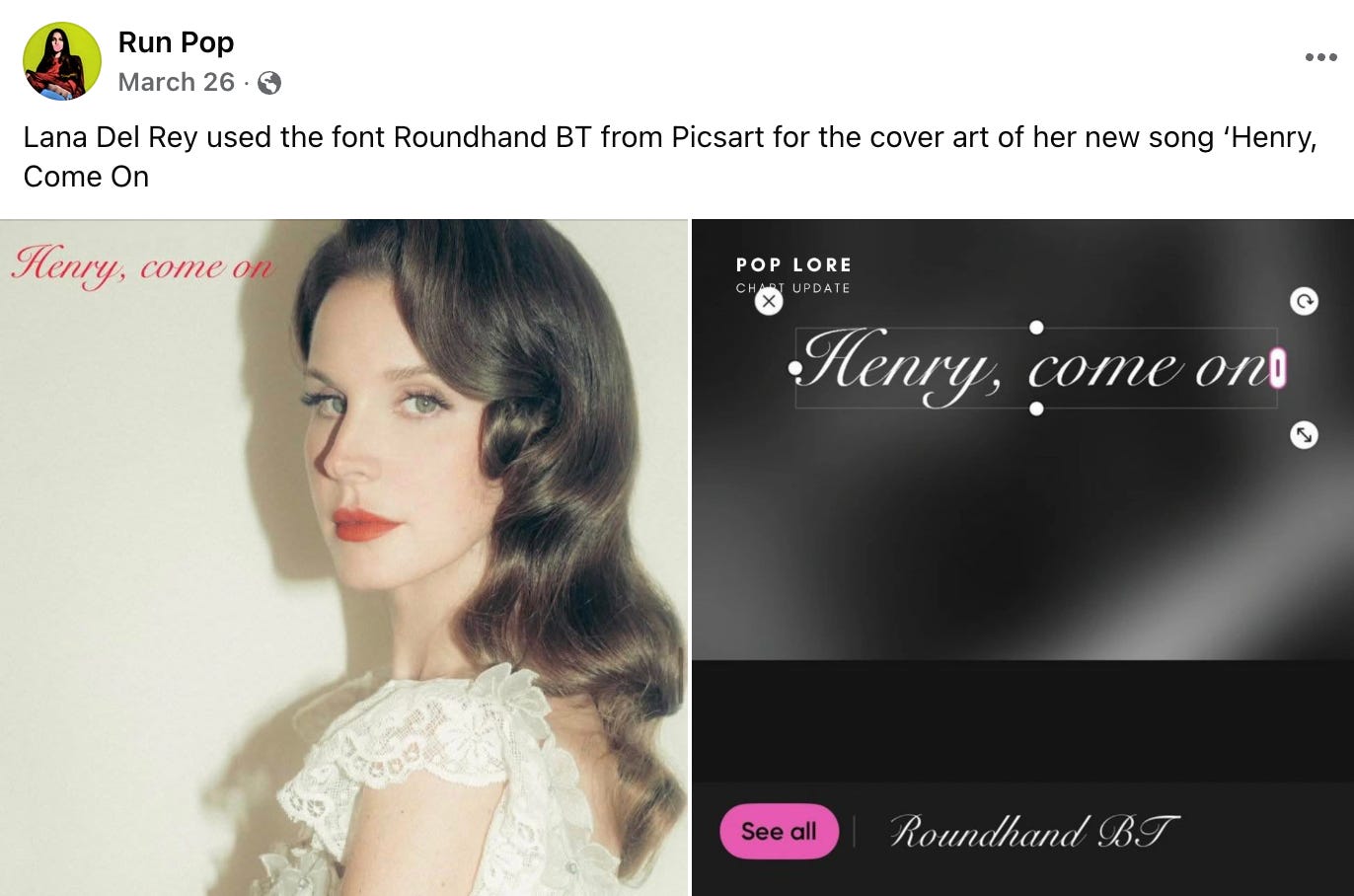
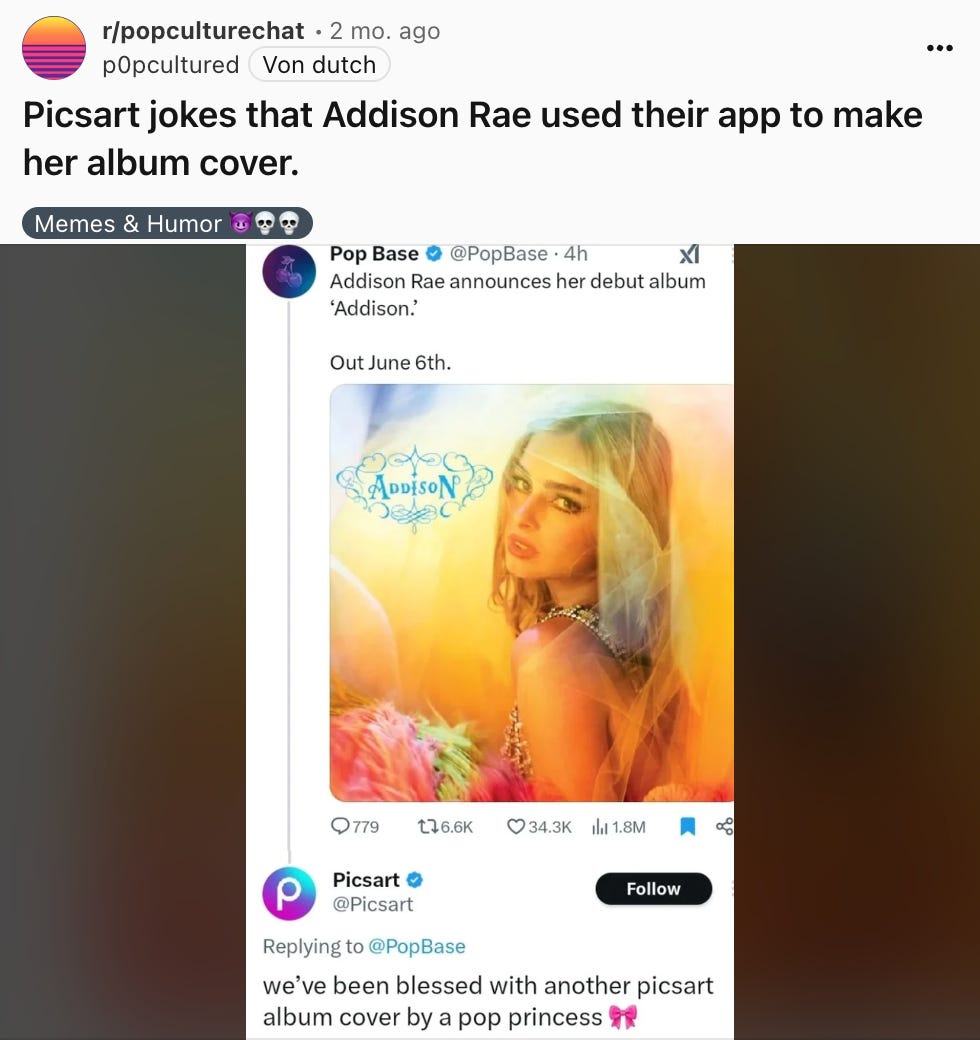
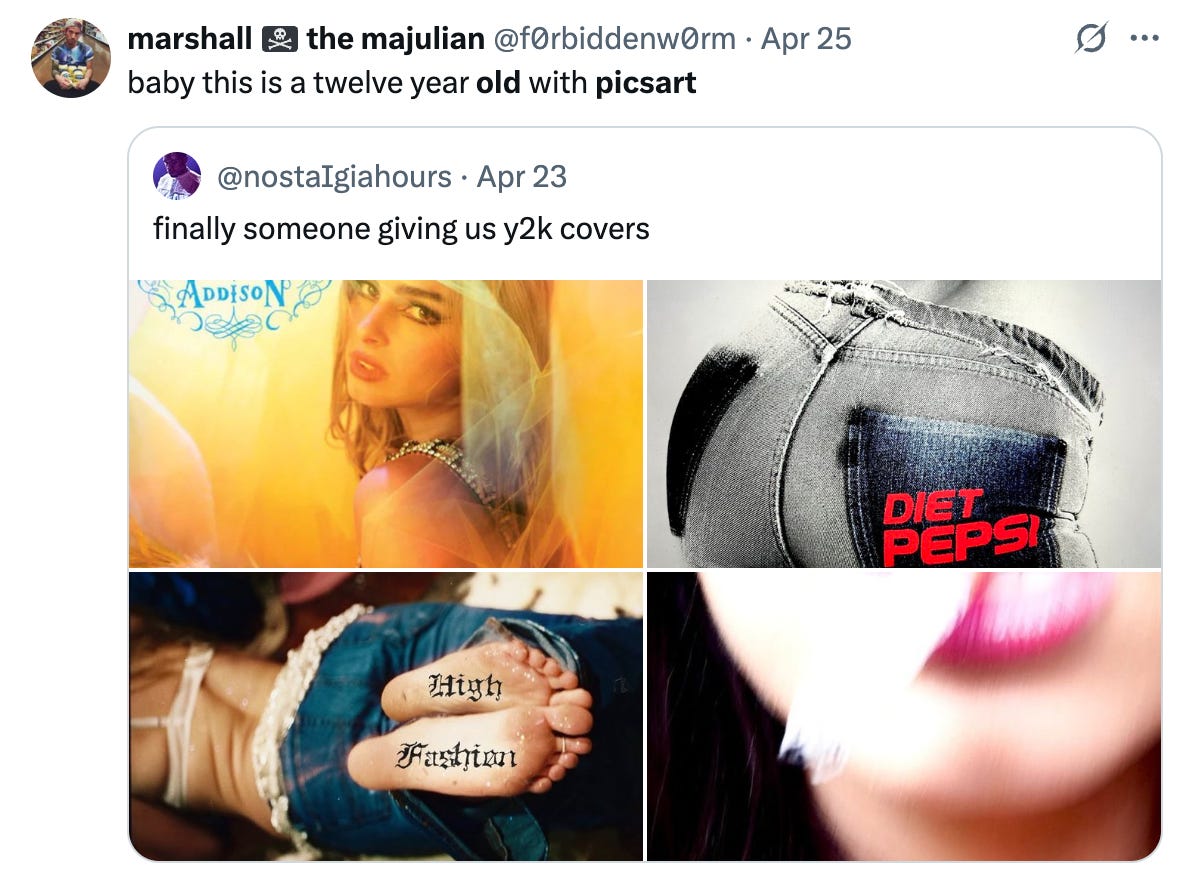
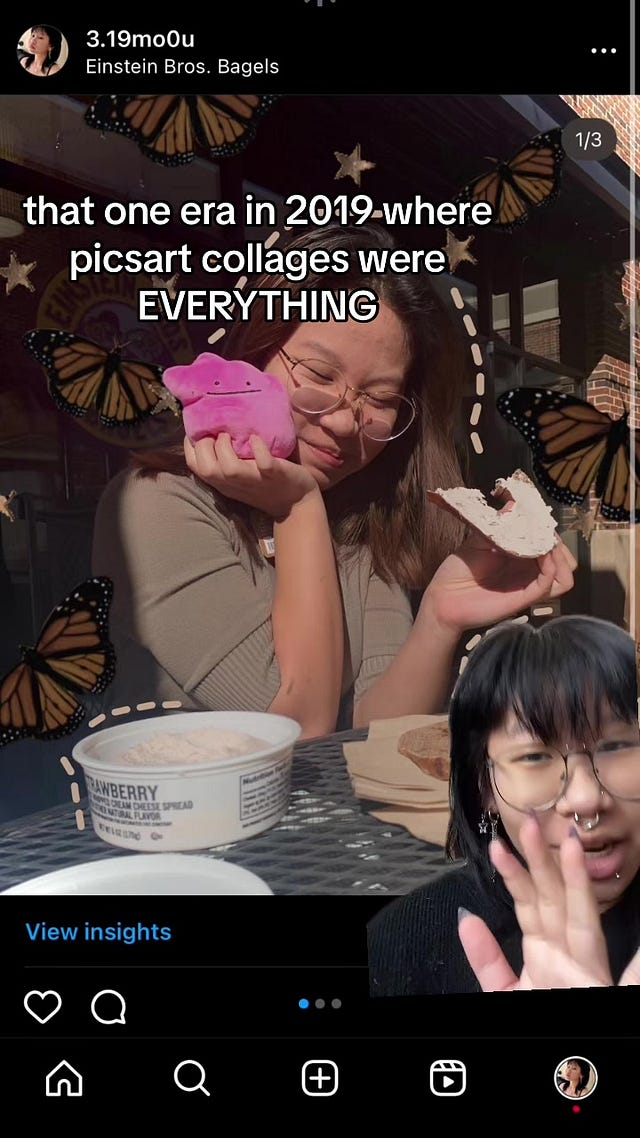
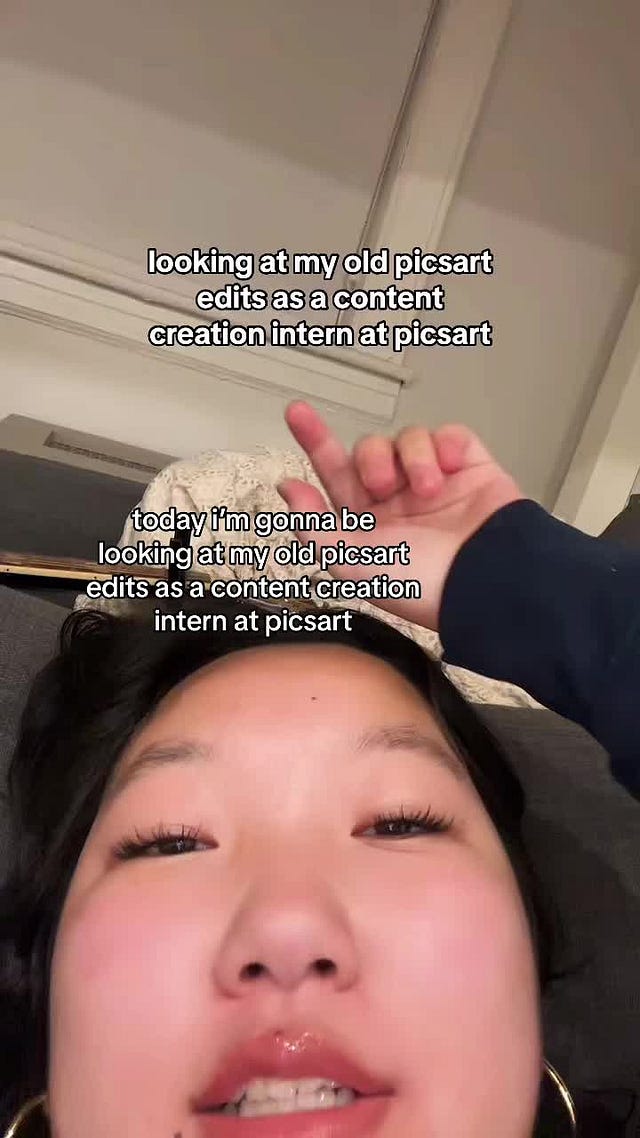
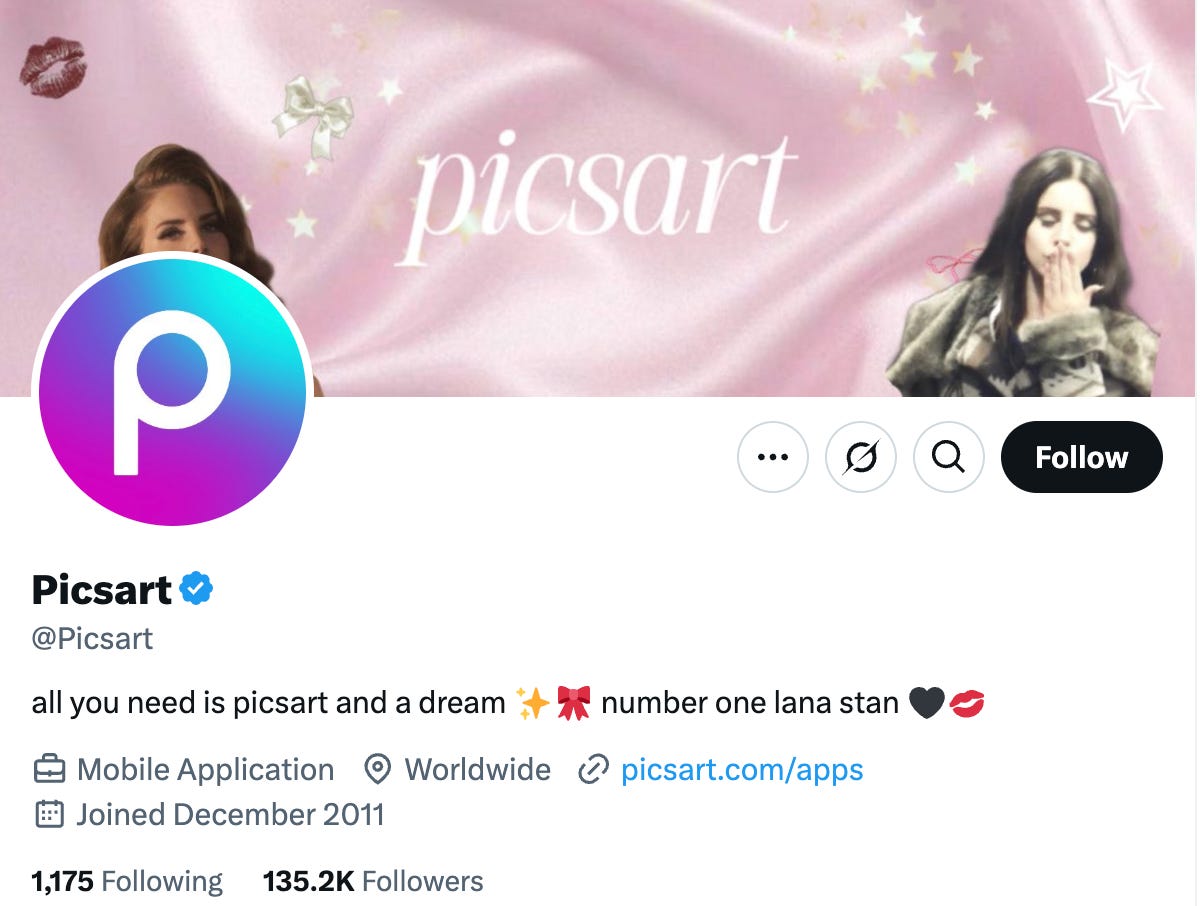
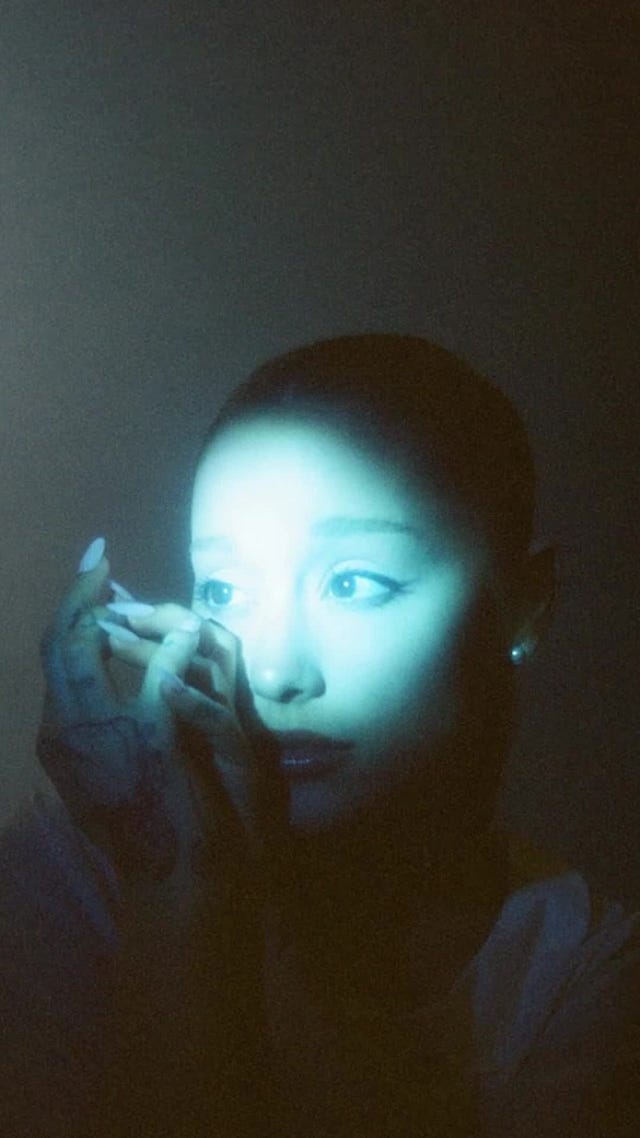
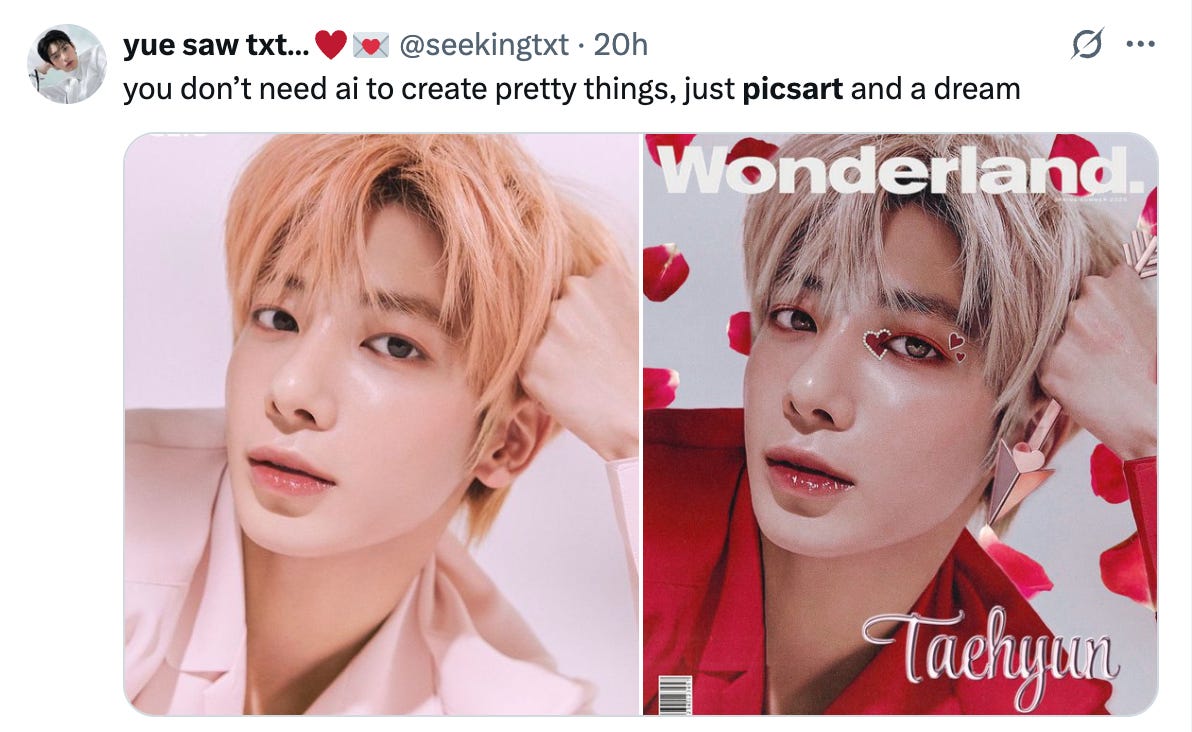
this reminds me of the recent "importance of editing your pictures" trend where people put funny stickers and filters over a photo instead of serious photography editing. I 💛 silly internet aesthetics